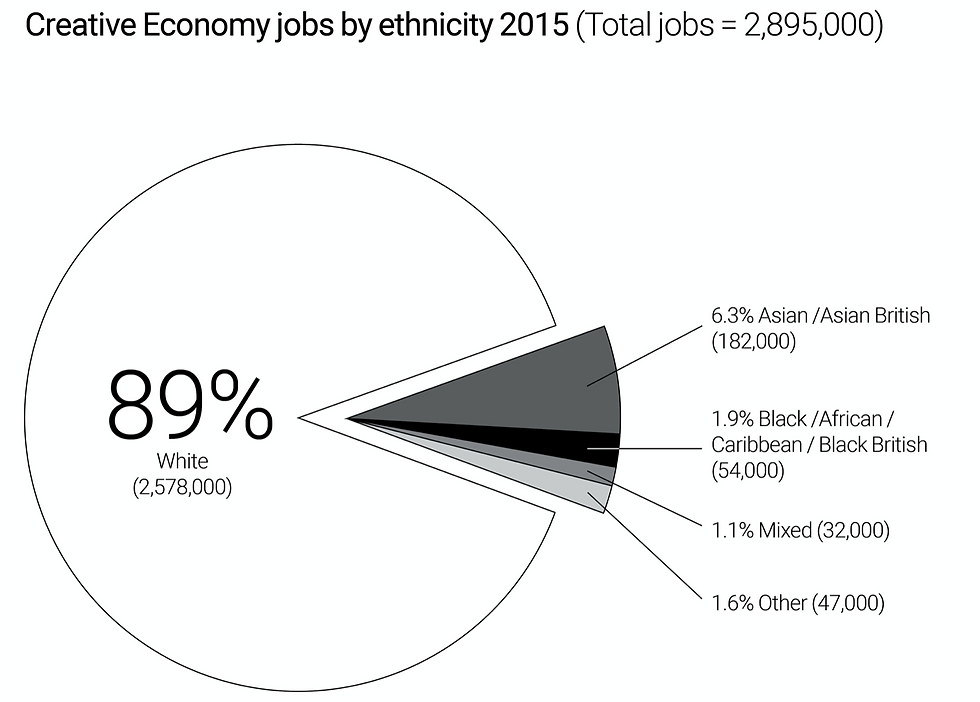Inequalities in Design: Master Bedroom to Primary
- Andrew Goodwin

- Feb 18, 2021
- 3 min read
Updated: May 4, 2021
Design Field Inequalities
Inequalities present throughout the world are not new, or unheard of, and yet are too often overlooked. There are clear racial, gender, and socioeconomic gaps present in the world today that further divide people, and the design field is not untouched by these inequalities. A 2016 NCARB (The National Council of Architectural Registration Boards) study found that only 18 percent of licensed architects are women and of the total percentage of licensed architects in the US, less than 10 percent are nonwhite. Mike Armstrong, CEO of NCARB, stated in a 2018 Curbed article that, “The profession must examine additional ways to encourage growth in groups that remain underrepresented...seeking out ways to create role models by promoting diversity in architectural leadership—at schools, in firms, and on state licensing boards.
Call to Action
While some inequalities may be more obvious when presented as fact or as collected data like the statistic above, others have been adopted into our everyday language, seen as common or inoffensive in today's world. A seemingly innocent piece of design and real estate jargon was brought to the forefront of the continued fight for equality this past summer as the Houston Association of Realtors became the first industry group to publicly announce they would be moving away from the gender biased and racially charged term ‘master bedroom’ in all future listings, instead calling the, historically, largest room in a home the ‘primary bedroom’.
Antiquated Terminology
The term ‘master bedroom’ can be traced back to a 1920’s Sears catalogue in which the company was selling kit houses to the American public. At the time, post WWI America hadn’t seen, or been able to afford, homes this large and so, in a marketing campaign effort Sears and their design team decided to highlight the newest room in the home with designations that would set it apart. While it’s not believed that the origin of this designation was rooted in malice or ill-intent, it still holds connections to pre civil war plantation dynamics and the ever growing male and female power disparity, carrying with it prejudiced connotations.

Rooted in Compassion
Throughout history the term has been questioned for its sexist and racist connotations, and yet the National Association of Realtors, as well as, The U.S. Department of Housing and Urban development (HUD) has deemed the term acceptable and has made no move to eradicate it. With no federally backed move to eliminate this word, many in the design and real estate profession are making the choice to be compassionate to others and simply remove this offensive term from their practices and listings. Mario Grecco, a Chicago based realtor interviewed on his stance for removing the term states, “There’s no reason to not call it something else. It’s not going to confuse anybody - ‘primary bedroom,’ everybody knows what we’re talking about. I think it’s easy. It shows compassion for your fellow human, and there is no reason not to.”
Starting the Conversation
The eradication of a word in our vocabulary is a small start to bring equality to the design and real estate professions. This change is a first step in addressing the issues of sexism and racism found throughout architectural practices, home buying, mortgage lending, and so many other aspects of everyday life.The move to a more inclusive terminology is about compassion and equality, it’s about updating an antiquated term that is hurtful to large portions of the population, and it's about starting a conversation for change.
Written by Natalie Baucom
References





Comments